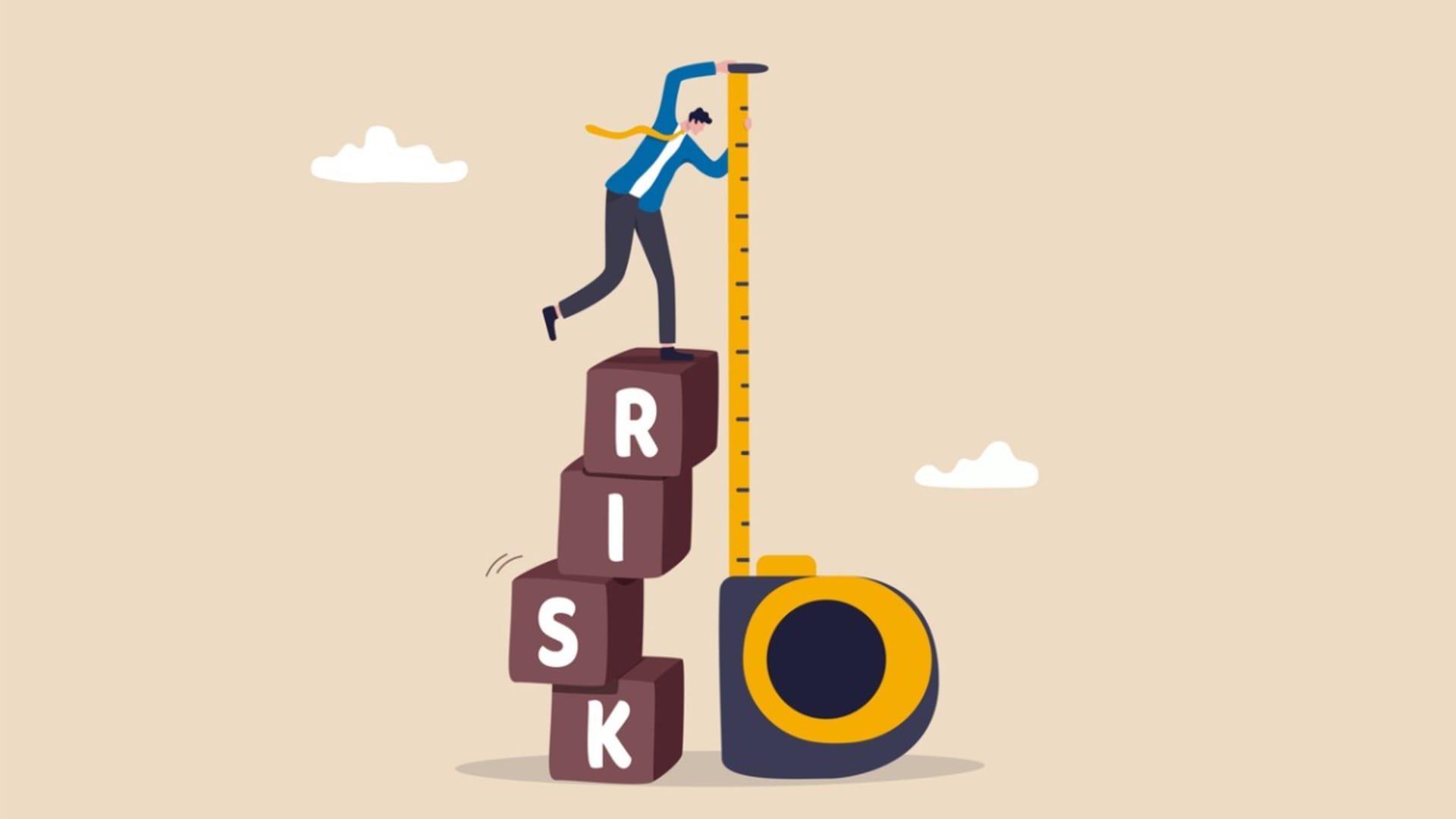There are always risks associated with any business venture. When you’re building software, the risks are only magnified. After all, the technology is ever-changing, the possibility of bugs is omnipresent, and there could be numerous changes and hiccups that threaten to derail your operations entirely.
BairesDev is no stranger to dealing with risk — and risk management. From planning ahead to prioritizing to implementing a rigorous quality assurance (QA) process, we’ve become accustomed to mitigating risk in software development. Ultimately, this is about reducing the prevalence of threats and resolving them seamlessly when they do occur.
While there is no way to completely prevent obstacles or errors from occurring during the software development lifecycle (SDLC), careful planning will allow you to know how to proceed when setbacks do occur.
Key Risks in Software Development
Grasping the technical dangers inherent in software development is vital for bringing a project to fruition. However, focusing solely on technical risks provides an incomplete picture. Managerial and external risks are also integral components of the overall risk profile for software projects.
Clear communication, organized resource allocation, and realistic timelines are essential to mitigate managerial risks.
Meanwhile, monitoring market competition, legal/regulatory constraints, and economic shifts is crucial to tackling external risks. Only by comprehensively addressing all risk categories – technical, managerial, and external – can software teams substantially improve the odds of completing projects on time, on budget, and with quality results. Though technical risks are a critical piece, comprehensive risk management encompassing all potential sources of risk is imperative for software development success.
Technical Risks
Technical risks relate directly to the technologies, tools, and techniques used in a project. They stem from the development process itself and can seriously impact outcomes.
Inadequate Technical Skills: Inadequate technical skills of the team can be a major risk in software development. It includes a lack of experience with the required technology, insufficient domain knowledge, and the inability to solve technical problems.
- Statistics: According to the PMI (Project Management Institute), 29% of project failures are due to a lack of competent team members.
- Mitigation: Regular training sessions and hiring experienced developers can help mitigate this risk.
Technology Uncertainty: Technology uncertainty refers to the risks associated with using new or unproven technologies. It includes the risk that the chosen technology might become obsolete or not work as expected.
- Example: The FBI’s Virtual Case File (VCF) project failed due to the use of outdated and incompatible technology, leading to a loss of $170 million.
- Mitigation: Conducting a thorough technology feasibility study before starting the project can help in mitigating this risk.
The complexity of the Project: The complexity of a project increases with the number of requirements, the difficulty in implementing them, and the interdependence between various parts of the project. High complexity increases the likelihood of errors and oversights.
- Example: The Healthcare.gov website had a highly complex project with many interconnected parts, leading to its initial launch failure.
- Mitigation: Breaking down the project into manageable parts and using modular design can help in mitigating this risk.
Management Risks
Management risks pertain to the risks associated with managing the project and the team. These risks can affect the project timeline, budget, and quality.
Poor Communication: Poor communication within the team and with stakeholders can lead to misunderstandings, wrong assumptions, and ultimately project failure.
- Statistics: According to the PMI, 56% of project failures are due to poor communication.
- Mitigation: Implementing effective communication strategies and using proper communication tools can help in mitigating this risk.
Inadequate Resource Management: Inadequate resource management includes insufficient allocation of resources, over-allocation of resources, and not having the right resources at the right time.
- Example: The failure of the Denver International Airport’s baggage handling systemwas due to inadequate resource management, leading to a loss of $560 million.
- Mitigation: Proper resource planning and regular monitoring of resource utilization can help in mitigating this risk.
Unrealistic Deadlines: Setting unrealistic deadlines can lead to inadequate testing, poor quality, and ultimately project failure.
- Statistics: According to the PMI, 25% of project failures are due to unrealistic deadlines.
- Mitigation: Setting realistic deadlines based on proper project planning and estimation can help mitigate this risk.
External Risks
External risks pertain to the risks outside the control of the project team and the organization. These risks can affect the project timeline, budget, and quality.
Market Competition: Market competition includes the risk that a competitor might release a similar product before your project is completed or that the market needs might change.
- Example: Microsoft’s Zune failed partially due to the market competition from Apple’s iPod.
- Mitigation: Conducting thorough market research and regularly monitoring market trends can help mitigate this risk.
Legal and Regulatory Risks: Custom legal software development can help mitigate legal and regulatory risks, which include the risk of changes in laws and regulations that might affect the project. It also includes the risk of legal actions against the project or the organization.
- Example: The failure of the Google Glass project was partially due to privacy concerns and legal issues.
- Mitigation: Understanding the legal and regulatory requirements of the project and regularly monitoring changes in laws and regulations can help in mitigating this risk.
Economic Fluctuations: Economic fluctuations include the risk of changes in the economic environment that might affect the project. It includes changes in exchange rates, inflation, and interest rates.
- Example: The failure of the Euro Disney project was partially due to the economic recession in Europe.
- Mitigation: Regularly monitoring economic trends and having a contingency plan for economic fluctuations can help in mitigating this risk.
How To Mitigate Risk In Software Development Projects
After formulating a plan to mitigate software development risks, implementing this plan and continuously monitoring its efficacy are essential. The engineering manager must collaborate with the software development team and QA teams to enact the strategies defined in the plan.
Regular meetings and updates should be scheduled to ensure all team members are aligned with the plan’s objectives and cognizant of their responsibilities. Moreover, remaining adaptable is crucial, as new risks may materialize during development, necessitating adjustments to the initial plan.
Frequently revisiting and updating the risk management strategy guarantees that the team is always prepared and proactive in tackling any challenges. Ultimately, a well-implemented risk mitigation plan will not just aid in preventing project failures but also facilitate the successful and timely completion of the software development project.
#1 Determine the Likeliest Software Development Risks
Before you can start addressing and preventing software risks, you need to identify what they are. What could possibly derail the project development? All software projects carry risk, but they can still vary depending on the nature and type of product you’re looking to create and the people and processes involved with it. Pinpoint what these might be upfront, and then routinely assess whether new risks have presented themselves during development.
#2 Categorize and Prioritize
Once you’ve identified risks associated with your project, it’s time to categorize them and determine which of them are the most pressing. The ones that present the biggest threats are the ones you should aim to tackle first.
Categorize the such risks on your list based on the type of concern they present and when you need to resolve them. You should also pinpoint how much effort they will require in terms of resources and personnel, as well as how difficult they will be to work out. This doesn’t necessarily mean the most intricate threats are the highest-priority ones — it’s just a way to classify your risks to facilitate easier planning.
#3 Create a Plan
In addition to identifying risks, you’ll need to have a clear plan for actually mitigating them. The engineering manager will likely spearhead this effort, but they will need input from the software development and QA teams on what’s feasible and what kinds of efforts they can put forth to reduce or resolve the issues.
This is the most effective way of preventing problems from escalating and wreaking havoc on your project development. Rather than dealing with issues as they arise, you’re thinking long-term and recognizing what you need to do ahead of time.
#4 Ensure Your Employees are Properly Trained
With tools and technology constantly evolving, all of your team members need to be at the top of their game. Reducing risk means ensuring that everyone is properly trained in how to use these technologies. They also need to be kept abreast of the processes and policies you have in place.
One way to implement training is to bring in outside help either through staff augmentation from Top 1% IT experts like the ones we have at BairesDev or programs in which specialists instruct on and demonstrate how to use the tools.
#5 Account for Changes in Requirements
Requirements may well change during the project, and you need to be ready for these alterations, should they occur. This, of course, is another risk. Have a process in place for working through requirement changes from clients, engineering managers, leaders, and other stakeholders, such that they won’t stall the project development.
#6 Research Compliance
You will need to comply with the laws of any area or territory in which you operate or release software. If your product is wide-reaching and concerns global markets, then this might mean you’re contending with many different laws and legalities. But this is a risk you can’t afford to leave to chance. You’ll need to thoroughly research the compliance laws governing any region where individuals will be using your technology.
It’s a good idea to have a dedicated compliance or legal professional investigate these matters and ensure you’re meeting the restrictions.
#7 Continually Monitor
Even with a clear, thorough plan in place, you can’t remove yourself from the process of risk mitigation. You’ll need to continue to monitor risks and issues when they occur. There should be regular check-ins, reports, feedback, reviews of how various concerns have been addressed, project-tracking tools, and more.
#8 Communicate
Communication is an essential part of any software development project — one that plays an important role in reducing risks and keeping them at bay. Ensure there are established means of communication between stakeholders, including the development team, quality assurance professionals, the client, and others involved or with a vested interest in the project development.
Your business should be keeping the client apprised of all efforts while the client, in turn, should deliver timely feedback. Team members should also communicate with one another, raising any concerns, obstacles, and successes as they occur. There should be a system for tracking risks and their statuses, such as through a log or portal, highlighting concerns and whether they’ve been resolved.
#9 Implement a Rigorous Quality Assurance Process
QA testing is one of the chief ways you can truly mitigate risks. This thorough process involves professionals analyzing features of your product like usability, performance, security, load threshold, and more. Leveraging the skills of QA professionals will help protect your business from the threat of releasing a product that is not up to par and full of vulnerabilities — as well as protect the end-user.
While it’s impossible to completely eliminate all risks from building software — after all, every software development project is risky to some extent — you can protect yourself by establishing a clear plan. That way, you can reduce the chances of these threats from getting the better of your product and business and increase your odds of success.
BairesDev has a track record of producing high-quality software and assisting businesses across sectors with their IT and technology projects. Contact us to learn more about partnering with one of the top nearshore outsourcing software development firms.






